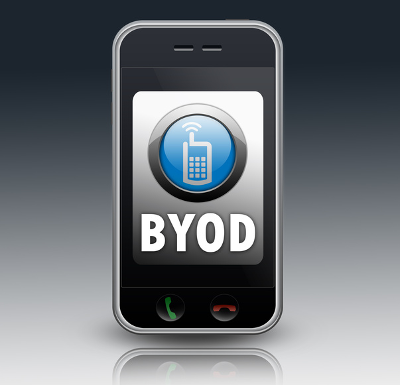Have any question?
Call (409) 861-4450
Call (409) 861-4450
Bring Your Own Device (BYOD) is a solution that has grown more popular over the past decade or so, primarily because more employees already own devices capable of running work-related applications. The employee gets to use a device they already know and love, while the employer saves money from the cost of equipping that employee. That said, the security risks associated with BYOD can undermine an ill-prepared implementation and open the door to potential legal action.
We've all been there. You're trying to quickly find that one photo from your vacation, or that important PDF for work, and you end up endlessly scrolling through a digital wasteland of screenshots, random downloads, and duplicates. Our smartphones have become extensions of ourselves, but without proper care, they can quickly turn into cluttered, inefficient tools that cause more frustration than they solve.
Business is more mobile now than it has ever been. For the most part, this uptick in mobility has helped sustain some business at a time when many would be expected to fail, but mobility isn’t all good. This month we thought we would take a long look at mobility and how it can be a problem for modern businesses.
There are a lot of benefits to implementing a Bring Your Own Device policy for your business. Firstly, people will be able to use the devices that they’ve purchased, and have grown accustomed to, for work. Moreover, many times they can access company information with the use of easy-to-use mobile apps, providing them with more opportunities to be productive. In fact, many organizations that install a BYOD policy see the majority of their workforce work more, which creates more opportunities for revenue growth, and ultimately, higher profitability of the endeavor.
Mobile devices are so common nowadays that you’ll likely encounter your employees bringing multiple devices to the office on a regular basis. Little do they know that everything they bring with them, from their Fitbit to their laptop, poses a security threat. Of course, the threat level from each individual device will depend on what it is exactly, but the point stands that the less you do about mobile device security now, the more danger your organization will be in down the road.
BYOD, or Bring Your Own Device, policies have proven to be a highly effective way for companies to save money. However, these policies need to address some of the shortcomings, potential costs and issues that comes with employees bringing and using their own devices could present to your business--not to mention security concerns.
Bring Your Own Device, or BYOD, has become an accepted practice in the workplace, but only when it’s implemented properly. The fact remains that allowing workers to use their personal devices for work purposes has its benefits and disadvantages, and that you should only allow them to do so after they adhere to your company’s BYOD policy. Of course, this assumes that you actually have a policy, so let’s talk about how to set up a quality BYOD policy.
 Mobile devices have taken the workplace environment by storm, and you’d be hard-pressed to find anyone who doesn’t use their smartphone, laptop, or other device for work purposes. This trend, called Bring Your Own Device (BYOD), helps employers spend less on new solutions, but it also presents a risk that needs to be managed: the Internet of Things (IoT).
Mobile devices have taken the workplace environment by storm, and you’d be hard-pressed to find anyone who doesn’t use their smartphone, laptop, or other device for work purposes. This trend, called Bring Your Own Device (BYOD), helps employers spend less on new solutions, but it also presents a risk that needs to be managed: the Internet of Things (IoT).
 Mobile devices are changing the way that businesses look at the workforce, but one of the main draws (and possibly detriments) is how the industry continues to change rapidly as new solutions are made available. In order to maximize your business’s efficiency with mobile devices, it’s important to consider these three trends shaping the way that organizations handle modern mobile device management.
Mobile devices are changing the way that businesses look at the workforce, but one of the main draws (and possibly detriments) is how the industry continues to change rapidly as new solutions are made available. In order to maximize your business’s efficiency with mobile devices, it’s important to consider these three trends shaping the way that organizations handle modern mobile device management.
 A trend that’s taking the office by storm is BYOD, or Bring Your Own Device. These policies entail workers bringing their own devices to the office and using them for work-related purposes. While this opens up many avenues for enhanced productivity and efficiency, being too laissez faire with your BYOD policy could instigate some problems later on, primarily in the security field.
A trend that’s taking the office by storm is BYOD, or Bring Your Own Device. These policies entail workers bringing their own devices to the office and using them for work-related purposes. While this opens up many avenues for enhanced productivity and efficiency, being too laissez faire with your BYOD policy could instigate some problems later on, primarily in the security field.
 Employees bringing their own mobile devices into the workplace (BYOD) is one of the hottest business technology trends. BYOD has been shown to increase productivity, but when it’s implemented improperly, it can leave your business vulnerable to security threats. How do you motivate employees to stick to your BYOD policy in order to ensure the safety of your company’s data?
Employees bringing their own mobile devices into the workplace (BYOD) is one of the hottest business technology trends. BYOD has been shown to increase productivity, but when it’s implemented improperly, it can leave your business vulnerable to security threats. How do you motivate employees to stick to your BYOD policy in order to ensure the safety of your company’s data?
 The trend of employees bringing in their own mobile devices to the office and using them for work purposes (BYOD) is growing rapidly. In fact, a new report from Juniper Research forecasts that by 2018, more than one billion employee-owned devices will be used in enterprises. A trend this big means that organizations have to take BYOD seriously.
The trend of employees bringing in their own mobile devices to the office and using them for work purposes (BYOD) is growing rapidly. In fact, a new report from Juniper Research forecasts that by 2018, more than one billion employee-owned devices will be used in enterprises. A trend this big means that organizations have to take BYOD seriously.
 As the mobile device market is booming, more employees are bringing in their own device to work (BYOD). Advantages to BYOD include a workforce that's mobile, increased employee satisfaction, and more; but using personal devices comes with risks, and business owners must consider these risks before allowing BYOD in their office.
As the mobile device market is booming, more employees are bringing in their own device to work (BYOD). Advantages to BYOD include a workforce that's mobile, increased employee satisfaction, and more; but using personal devices comes with risks, and business owners must consider these risks before allowing BYOD in their office.
 There's a tidal wave of different consumer devices available on the market; smartphones, tablets, laptops, netbooks, and much more. Employees love their devices and love bringing them to work. If your company is allowing for Bring Your Own Device (BYOD), then you will want professional support to get the most out of it.
There's a tidal wave of different consumer devices available on the market; smartphones, tablets, laptops, netbooks, and much more. Employees love their devices and love bringing them to work. If your company is allowing for Bring Your Own Device (BYOD), then you will want professional support to get the most out of it.
Get the Knowledge You Need to Make IT Decisions
Technology is constantly evolving, and keeping up can feel overwhelming. Whether you want to understand cybersecurity threats, explore automation, or learn how regulations like PCI DSS impact your business, we’ve made it easy to access clear, straightforward insights on key IT topics.
Learn more about what NetWorthy Systems can do for your business.
NetWorthy Systems
701 W. Division Ave Suite 100
Orange, Texas 77630